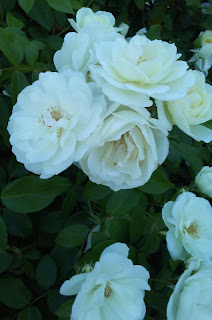White Bunches

This is a picture of some flowers. I took this at a rose garden in southern California. The garden was really big, but even more beautiful. White Bunches by Bhargavi Gulia Composition: The first rule I followed in taking this photo was the Rule of Thirds. The main bunch of flowers is towards the top instead of being in the center. Next, I tried keeping a dark background so the white flowers stick out more through contrast. Finally, I made sure that the flowers towards the bottom right were showing at least 60% of what was seen in the main bunch so they do not look like obstacles, but rather side subjects.




